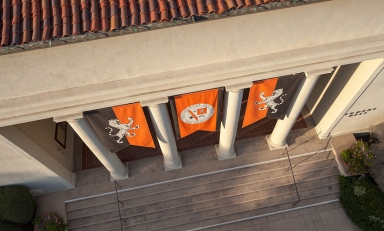
As a doctoral student researching her dissertation at the Virginia Historical Society, Sharla Fett’s attention was drawn to the 1860 journal of a doctor who had served on board a ship taking Africans seized from an illegal slave ship to resettle in Liberia. While it wasn’t relevant to her study of slave health and healing practices on southern plantations, it made a lasting impression.
More than twenty years later, Fett’s newest book, Recaptured Africans: Surviving Slave Ships, Detention, and Dislocation in the Final Years of the Slave Trade (University of North Carolina Press), returns to that source of inspiration to explore the little-known story of roughly 2,000 Africans who found themselves in the United States after the Navy seized them from four illegal slave ships headed for Cuba in the years just prior to the Civil War.
Through a close and careful reading of contemporary records, Fett teases out what she calls the "remarkable human odyssey" of these men, women and children and the relationships they built among themselves to survive the dislocation and suffering of both enslavement and involuntary relocation to Liberia.
"As the child of medical missionaries stationed in what is now the Democratic Republic of the Congo, I had spent time on the coast near the mouth of the Congo River, which is where a majority of these young people had been loaded onto illegal slave ships," she says. "My experience has been so vastly different from theirs, and yet I could at least envision their point of embarkation. It was a small but significant point of connection."
Much of the scholarship in the field has focused on British efforts to fight the slave trade, which generated far more of a written record. "There are publications on the trials of slavers and books on U.S. naval operations to try and interdict the slave trade, but very little about recaptives themselves," Fett says. "I wanted to understand the world of slave ship survivors as they crossed and recrossed the Atlantic within the space of about six months."
The successful international collaboration between scholars to assemble a comprehensive transatlantic slave database has spurred a push to illuminate the human experience behind the numbers, and Fett sees her book as a contribution to that effort.
"I put myself in a group of historians who have taken a literature about slavery as social death and asked, how do enslaved people recreate life in the middle of death?" she says – not an easy task. "How successfully can you write about the experience of recaptives with so few first-person voices? That’s a question I asked myself all the way through this process. With careful research, though, it is possible to illuminate the lives that recaptive Africans shared with each other over the course of their long and deadly journey."
Fett cast a wide net that included contemporary newspaper and magazine accounts, government records, and journals kept by white participants in the suppression of the slave trade and the repatriation of Africans to Liberia. This had to be supplemented with broader research to gain a clear picture of what was happening not only in the United States but in England, the Caribbean, Brazil and West Africa – all of which either participated in the slave trade or efforts to suppress it.
While the book seeks to shed light on the recaptive experience, Fett also shows how their presence in Florida and South Carolina influenced national political debates between abolitionists and defenders of slavery about slavery, slave trading, and race. Unlike the better-known antebellum legal categories of enslaved, free and fugitive blacks, the recaptive is a much less familiar figure that complicates conventional thinking about racial attitudes and practices of the period.
"In the United States at the time, American participation in efforts to suppress the slave trade was politically controversial because the laws against the transatlantic trade were seen as a comment on U.S. slavery," Fett says. "That is one of the questions I explore: What did it mean for African slave ship survivors to become captives of a politically divided slaveholding republic?"



